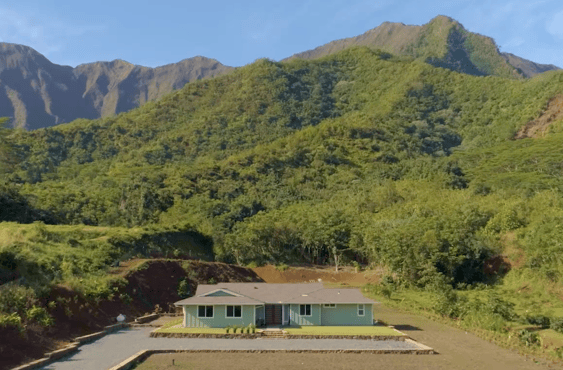Nurturing Well-Being and Leadership: HPM's Conscious Leadership Program
At HPM, we believe that true organizational success stems from the personal growth and well-being of each owner-employee. Our Conscious Leadership
On the HPM Blog, our goal is to be your guide through the entire home building process.
You’ll find remodeling tips, design inspiration, advice on working with pros, DIY projects and more!
Before moving forward with your new home, it makes sense to put some thought into how the floor plan you choose will best suit the lot. It may be tempting to pick out a floor plan and a location for the home as soon as your lot is secured, but you should avoid rushing it to ensure you leverage all of the available natural elements. Take the time to do a thorough review of the site conditions—taking into account climate, views, sunlight, roads and other factors—and use those variables to adjust your final floor plan and lot orientation. Here are some of the most important considerations to help you make an informed decision.
Track the trade winds
A home can become much more livable if you plan ahead and tweak your house plan and location based on prevailing wind direction. Due to Hawaii’s varied terrain, it may take a few visits to your site to confirm prevailing winds, but then you can use that knowledge to your advantage. For example, if you shade the windward side with landscaping or a lanai, air will be cooled before it enters the home. Low windows on the windward side and high windows facing leeward are also helpful ways to naturally cool your home. If possible, situate the home at a 45-degree angle to prevailing winds. An open floor plan will allow air to move freely without the need for fans or costly air conditioning. If your garage is the first thing the wind encounters, you will lose a great deal of available breeze, so you may want to adjust your plan accordingly.
Look at tactical landscaping
Sometimes what appears to be the best spot for a home is better saved for outdoor activities, gardens or other ways to enjoy the natural environment. More importantly, strategic landscaping can add to the enjoyment of your yard while simultaneously reducing energy bills. For instance, if you are in a warmer area of the island, you could plant vegetation to effectively shade the portions of your home that receive direct sunlight. At higher elevations and cooler locales, keeping foliage further away from the home can deliver passive solar heat gains. If your property includes an abrupt elevation drop, choosing that location to build on may give you a walk-up approach on one side and a raised area on the opposing side—which will serve to cool down the home.


Harness natural light and great views
Who doesn't love a sunny kitchen in the morning? A livable home does a terrific job of integrating natural light and fresh air into the various rooms, where and when it is most needed. Note in which direction on your lot the sun will rise and set, and also check your northern exposure. Since no direct light will be available from that direction, it’s a good place for a garage or sleeping room. Try to allow light from at least two directions into all living spaces to help you get tasks done without the need for artificial lighting. If possible, minimize windows on direct east- and west-facing walls, since these are typically difficult to shade. Note that a deep floor plan will prevent light penetration beyond 15 feet or so; in this situation, you can add sources of organic light to the home, such as clerestory windows (vertical windows located on high walls) and skylights.
If you're fortunate enough to have incredible views, don't block them! Consider installing a picture window or lanai in the direction of your best view. If your views are nothing special, look for outdoor touches you can use to enhance the aesthetics—such as a lava rock outcropping, a clump of bamboo or a water feature.
Regard the roads
If noise or debris from the access road is an issue, consider positioning your home further away from the street. If your lot faces an unpaved road, and the wind tends to blow from the road to your home, you can minimize it by adding a hedge or solid fencing.
Factor in the future
Finally, if you plan to expand your home one day, take note of where the lot setbacks are located. This is the boundary line that determines where you can place a structure. Make sure you place utilities, such as septic tank or a well, in a spot that allows for future add-ons.
When you take the time to see the full picture of what your land offers, you can greatly maximize your family's comfort and enjoyment of your new home. Talk to an HPM Homes consultant to assist you in reviewing all of the important lot characteristics before you make any decisions. HAPPY HOME BUILDING!
At HPM, we believe that true organizational success stems from the personal growth and well-being of each owner-employee. Our Conscious Leadership
HPM Homes is excited to unveil three stunning new home models that embody the company's commitment to creating spaces that enhance the lives of
This article has been updated as of November 2024
Expert guide to HPM's pre-approved home plans, wind zone considerations, and cost-saving
Drumroll, please! After much planning and consideration, we have some exciting news to share about HPM Hilo. Starting November 6th, we will begin
Since our founding in 1921, HPM Building Supply has been dedicated to helping Hawai‘i build and live better. We have transformed and grown in many
Keep updated with the Latest News, Products, Deals and More!
© 2018 HPM BUILDING SUPPLY. ALL RIGHTS RESERVED
Receive the latest in HPM news, products, exclusive deals and more!
> Sign me up!©2023 HPM BUILDING SUPPLY | HOME PLANS, MATERIALS ALL RIGHTS RESERVED.

Copyright © 2022 HPM Building Supply. All Rights Reserved.